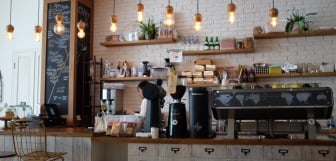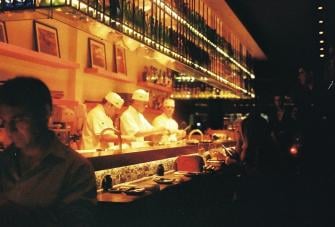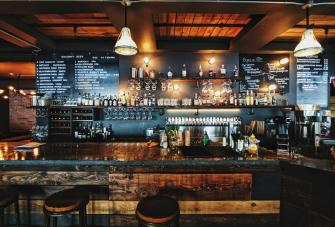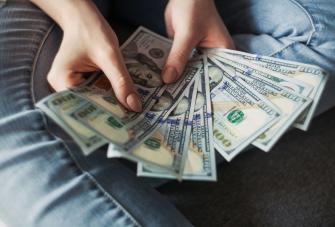Are Coffee Shops Profitable?
Many people dream of opening a coffee shop. Yet, these dreams are often dismissed as unprofitable and unrealistic. After all, many believe that the vast majority fail within their first year.
This is a misconception. 2020 statistics show that 78.5% of restaurants and food outlets see their first birthday (at least). Additionally, coffee is one of the highest-value commodities worldwide. The global trade in coffee is worth around $601.4 billion.
Here are seven things you need to know before attempting to make your business mogul / barista life a reality:
Coffee is still incredibly popular
Younger people are becoming increasingly interested in coffee, thanks to large chains offering iced and blended drinks. Some companies even offer frappuccinos without espresso, or ‘coffee bases’ to appeal to customers who love the coffee aesthetic, but not the taste. This tells us that coffee culture is extremely popular among all age groups; people want to be involved in this universal trend, even if they don’t enjoy the beverage itself. The average adult was thought to drink 42.6 litres of coffee per year in 2020.
Understand the intersection between coffee and culture
Running a successful coffee shop is more complicated than simply boiling the water and adding the grounds. Curating the right atmosphere for your customers is essential since twice as many customers choose to sit in the store, rather than take away their hot drinks.
Coffee is the morning beverage of choice for most working adults. Students and younger people tend to frequent cafés in the afternoon and evening time, viewing the coffee shop as a communal, productive space. Culturally accepted as a third space between the office and home, 75% of young people claim that they have visited coffee shops to gather information for study or to complete work.
Unless your coffee shop is targeting a niche audience, it is better to create an ambient space that appeals to many types of customers. Striking the balance between a cosy corner and sophisticated meeting space will help your cafe appeal to a wider audience, and therefore attract more visitors.
Price per cup
Like any business, to be sustainable, a coffee shop must make more money than it spends. Turning to the product itself, coffee is a relatively low value item. You have to sell a lot of it to generate a substantial income. However, the profit margins are incredibly high, typically 90% or upwards.
- A wholesale bag of arabica beans generally costs around $18-32 per kilo. There are roughly 120-140 servings per bag, therefore one cup will cost around 18 cents. Add milk for around 10 cents.
- The average cup of coffee in the US costs $3.99.
- That’s a gross profit of $3.71 per cup (not including the take-away cup, VAT or other prime costs).
Traditional coffee shops are evolving
The majority of coffee shop patrons choose to stay at the shop to drink their coffee. Therefore, the cost of running the premises can far-exceed the price of the coffee itself.
Drive-through coffee shops and coffee vans are becoming increasingly popular. Food and drink vans are actually listed as one of the most profitable small businesses to open in 2021. After all, customers should come back because of your excellent coffee, not just because of the comfy sofas and free Wi-Fi.
A sit-down coffee shop can cost between $258,000 and $484,000 to open from scratch due to the pricing of rent and commercial-grade equipment. Compare this to a coffee van, which typically costs around $35,000 and $100,000. Coffee doesn’t require a large kitchen or storage space since most of the ingredients for the drinks are the same, as is the equipment used to make them.
Essentially, coffee vans cost less to set up, yet have the potential to generate the same revenue as traditional sit-in shops: return on investment is much higher.
As an added bonus, they are mobile. Some coffee vans in Ireland relocate from the inner city during the week to tourist spots over the weekend. It should be noted that vans are still often subject to rent the grounds where they are parked, and legally require a trading licence. So, moving around could incur additional fees which wouldn’t be necessary if your van remains static.
Location, location, location
Your location will affect everything, from foot traffic, the type of customers you attract and the prices you charge. The distance from local competitors is another factor to consider, as customers may expect competitive pricing, a varied menu, speciality coffees, or a better brewed blend.
The price of fixed and variable costs will be largely impacted by where you choose to set up shop. Rent, insurance, licensing, maintenance and repair vary greatly across different regions.
Coffee shops should be easily accessible, visible and well marketed in order to stand out in a competitive market. Picking a spot where people will catch the aroma of the coffee will help too!
The service is just as important as the brew
While good coffee should never be rushed, slow service will deter customers. Two solutions include providing the option to order and pay in advance, and allowing customers to pay via mobile.
Offering quick, mobile-friendly payments will appeal to busy clientele who want to grab their coffee and go. 67% of users prefer to order online as it allows them to order at their own pace and make custom changes to their drinks.
Systems such as Epos Now coffee shop point of sale system can create an ordering platform for your coffee shop which lets customers browse the full menu, order collection or delivery, and pay from their phones.
This also provides the opportunity to add incentive features, such as loyalty tokens or discounted cakes/pastries when they purchase their drinks online. A massive 45% of consumers say that offering mobile ordering and loyalty schemes would encourage them to use a service more often.
It costs five times more to bring in new guests rather than retain existing customers. Providing deals which reward repeat visits, and sending reminders via email, texts or app notifications, will entice customers to return to your business in a competitive market. New coffee shops will want a POS that provides these options. Your POS should remain affordable enough to handle small transactions, yet be efficient enough to scale up as the business expands.
Consistent cups
With 16% of people attending coffee shops daily, it’s obvious that high quality brews are expected on every visit. Coffee shop and café expert Andrew Bowden notes that clients generally allow for three errors before they abandon your business - therefore, the room for mistakes is quite small. He notes that if only 95% of your drinks are perfect, then a regular customer could receive at least one bad drink a month.
Creating set recipes and quantities guarantees consistent positive experiences. New customers and regulars alike should receive a perfect blend, whether it has been poured by the head barista or a new employee. Epos Now’s Café system allows you to store recipes with pictures, which helps baristas ensure that every cup is a perfect blend.
Count your beans
Another benefit of standardising your recipes is that it helps monitor stock and waste. Essentially, it prevents milk being poured down the drain because staff are measuring by eye or guessing how much they’ll require.
Checking your inventory regularly allows you to discover if certain items are running out more frequently than predicted, and helps certify that the necessary supplies are always in stock.
The Epos Now system automatically deducts from master inventory levels every time a sale goes through the till. This simplifies the stocktake process so you can quickly get an accurate count of your cafe’s inventory and forecast with maximum accuracy.
The Café system also provides a report of which items are most popular, helping you track customer habits closely and fulfil demand with greater ease. Having a record of peak hours and days will also help you to schedule smartly, minimising staff costs by allowing you to only schedule as many people as necessary.
Many people don’t realise that the costliest element in a cup of coffee isn’t usually the beans or grounds, but the milk, since a lot more of it is needed per cup. Using a single shot cappuccino as an example, a full cup will consist of 30g espresso and 270ml milk.
Dairy items are the most perishable too, which is why they should be ordered in smaller batches, but more frequent increments. Extras like syrups and chocolate powder have a much longer shelf life, but should also be monitored to ensure they’re not being used too generously. Determining an order and delivery schedule will ensure products are fresh, and keep down costs attributed to waste.
In short, coffee shops are extremely profitable due to the high profit margins and low cost of stock. Like any business, effective management of costs will ensure your café is a success.
You might also like:




